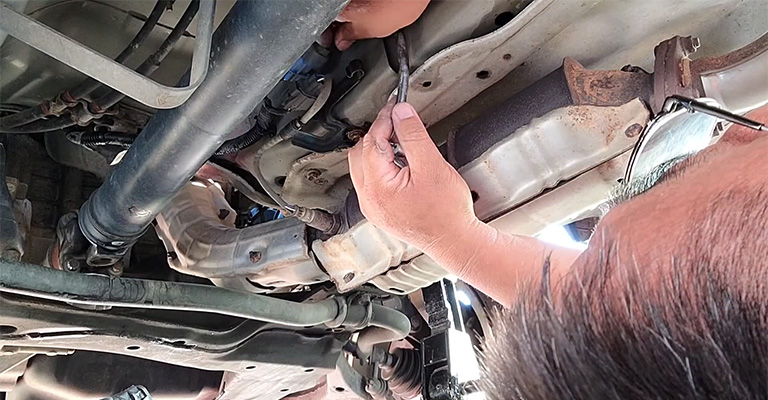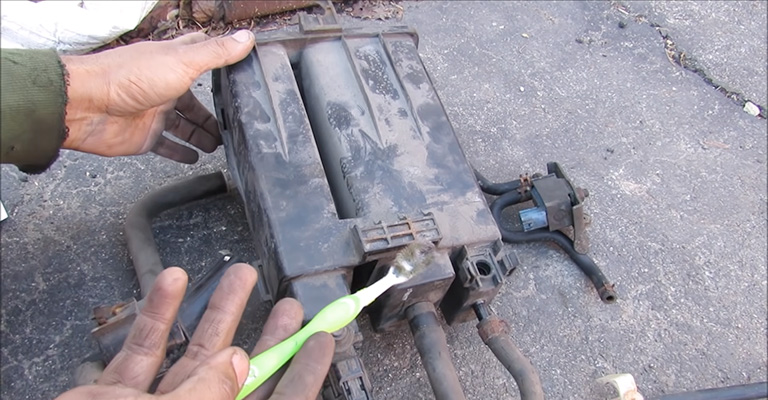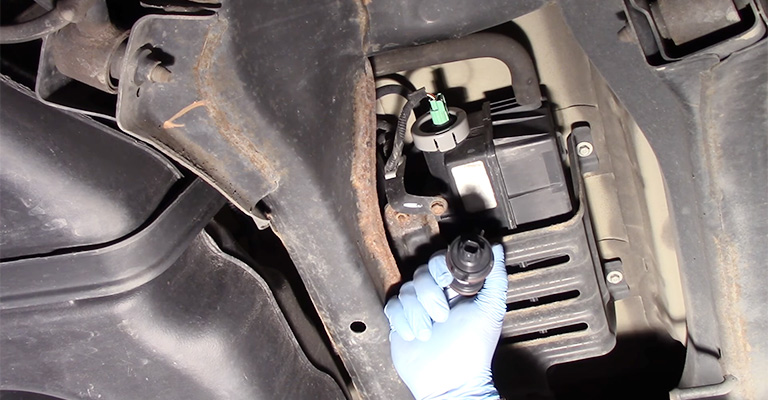“EVAP” stands for Evaporative Emission Control System. This system captures fuel vapors and routes them to an engine for combustion. Fuel vapors are stored in an activated-charcoal canister, which is connected by tubes to the fuel tank and the engine intake system.
The purge and vent valve control the storage and flow of fuel vapors, and pressure sensors monitor the system’s operation. Control and monitoring of the EVAP system are handled by the ECM (engine control module). A malfunction indicator lamp (MIL) will illuminate if the ECM detects a problem with the EVAP system.
Whenever the vent valve circuit isn’t working, the ECM shows DTC P0498, “Evaporative Emission (EVAP) System Vent Valve Control Circuit Low,” and illuminates the MIL. Canister close valves (CCVs) or vent shut valves are two names for the vent valve, depending on the automaker.

Error Code P0498 Definition: Evaporative Emission System Vent Valve Control Circuit Low
The error code P0498 indicates a low vent valve control circuit in the evaporative emission system. In general, vehicles with an OBD-II system, especially those made between 1996 and now, will display this trouble code.
Different makes and models may differ in the definition, troubleshooting, and repairs. Whenever the PCM detects a problem in the EVAP system, particularly when the vent valve circuit indicates “low,” the Error Code P0498 will be stored, and the Check Engine light will illuminate.
This code indicates an error code related to the powertrain. The generic repair method applies to all makes and models (1986 and newer), but specific repair steps may vary based on the model.
How EVAP System Works?

It captures fuel vapor and routes it to the engine, where it can be burned later to prevent it from escaping into the atmosphere.
To burn the vapors, they must first be stored in a closed container (canister) before entering the engine. The vapors are vented into the tubes after the fuel is stored and eventually lead to the canister due to the pressure that is built when the fuel is stored.
Fuel vapor is absorbed by a charcoal element inside this canister and released when it’s time. The PCM monitors and controls the system by controlling the EVAP system and opening the purge and vent valves.
Fresh air can enter the EVAP system through the engine intake vacuum, and the vapor can be flushed out to burn.
What Are The Common Causes Of Code P0498?
DTC P0498 may have a variety of causes, depending on the year, make, and model of the vehicle. A few of the most common are listed below. Additionally, this error code can be caused by a variety of factors, including:
- Circuit or wire issue
- The vent valve is defective
- PCM with a defect (rare)
Honda Code P0498 Causes

There have been reports of faulty vent shut valves on Honda vehicles, including the Civic, Element, and Accord. It is usually possible to fix the problem by replacing it before condemning a valve; however, always a complete circuit diagnosis is.
Common P0498 Error Code Symptoms
- The vehicle’s memory system registers this code, as with other error codes.
- Consumption of fuel increases slightly
- There is a slight loss of engine performance
- It is common for no symptoms to be noticed, however.
How Do You Troubleshoot Code P0498?
CCV circuit is referred to by DTC P0498. The circuit between the ECM and CCV, as well as the valve itself, can be evaluated using a DVOM (digital volt-ohm meter) and a repair manual or electrical wiring diagram.
You can start your diagnosis wherever is most convenient for you, depending on the accessibility of the ECM and CCV. First, test the resistance across the appropriate terminals of the ECM after disconnecting the ECM and performing an overall circuit check.
It is recommended that you refer to your specific repair manual to determine the proper resistance value for your solenoid valve.
Ensure that both the power and ground sides of the CCV circuit are connected to the ground while the ECM is disconnected. There should be an open circuit (infinite resistance) between both.
How To Fix Honda P0498 Code?

It is known that some Honda vehicles, such as the Element, Civic, and Accord, have vent-shut valves that have failed, leading to this code.
- It is usually possible to fix the problem by replacing the defective component before condemning a valve and completing the circuit diagnosis. The following are common repairs for this code:
- Removing fuel residue from the pintle
- Cracked or damaged vent valves should be repaired or replaced
- Damaged or corroded wiring harnesses or wires need to be repaired or replaced
Because the EVAP system is exposed, rodents often damage the wiring, leading to this code. Therefore, you should also look for animal droppings and nesting signs, likely indicating where the problem lies.
Other Possible Solutions
This trouble code can be diagnosed and repaired by checking your fuses. If there is a fuse in the system that powers the vent solenoid, check it.
- Wire harnesses that have been rubbed through or chafed should be checked.
- Ensure that both wires are not shorted to each other, ground, or power.
- Please make sure the vent valve is not damaged or cracked by visually inspecting it.
- Use a digital volt-ohm meter (DVOM) to check the continuity between the PCM/EMC/ECM and the wires.
- The valve will light up if power and ground are OK if you can actuate it using an advanced level scan tool or a bulb wired to both terminals.
You can use a DVOM to check the resistance of the vent. It usually has a low resistance reading; you can refer to the manufacturer’s specifications or compare it with a new vent.
Final Words
To control the venting of the atmosphere of the Evaporative Emission (EVAP) canister, a vent shut valve is attached to it. Without a VSV signal, the EVAP canister vent shut valve is open (open to the atmosphere).
PCM detects a malfunction and stores the P0498 code if the return signal is OFF when the ON signal is sent to the EVAP canister vent shut valve.

Leave a Reply